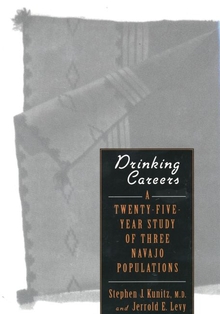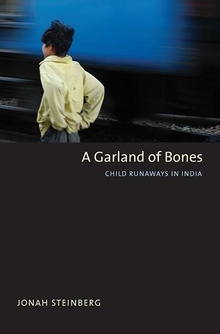Drinking Careers
WARNING
You are viewing an older version of the Yalebooks website. Please visit out new website with more updated information and a better user experience: https://www.yalebooks.com
A Twenty-Five Year Study of Three Navajo Populations
Stephen J. Kunitz and Jerrold E. Levy
Stephen J. Kunitz and Jerrold E. Levy study the histories of those who have died as well as those who have survived since the first study was done. They show that, compared to those who have survived, the former were more likely to have been solitary drinkers and were on average younger at the time when they were first interviewed. The authors also present data for the entire Navajo population on changing mortality from alcohol-related causes from the 1960s to the present; they compare alcohol-related death rates among Navajos to those among rural Anglos in Arizona and New Mexico; they analyze two family histories—one of a family with severe alcohol problems, the other of a family with none—that illustrate how traditional patterns of wealth have shaped the way people have learned to use alcohol; they study the factors that may have led to the emergence of a solitary, unrestrained drinking style among some Navajos; and they describe the changes in treatment programs and the transformation of traditional healing systems as they are integrated into a bureaucratized health care system.
"This book is a major contribution and will have a significant impact on alcohol studies."—Mac Marshall
"Kunitz and Levy hit the bullseye again! They pay close attention to biomedical and sociocultural details, methodology, and alternative interpretations of these details, among distinctive subpopulations in this country's largest Indian tribe. In so doing, they provide valuable data, insights, and practical implications that are equally relevant for anthropology and alcohol studies."—Dwight B. Heath
"This book is a welcome addition . . . [and] offers a retrospective view of their collaboration, an analysis of their current thoughts on alcohol use by Native Americans, and a call for prospective studies. The authors are to be commended for a job well done."—Walter Randolph Adams, Ph.D., Center for Alcohol and Addiction Studies, Brown University, New England Journal of Medicine
"It is difficult to imagine a more balanced and thorough account of drinking in a dominated minority culture anywhere. The authors . . . offer a uniquely rich account of drinking in social and cultural context, with close attention to epidemiological, economic, political and other relevant factors over time."—Dwight B. Heath, Addiction
"A truly significant book. . . . The most comprehensive longitudinal study of American Indian drinking yet attempted. . . . This book is sure to remain an important contribution to our understanding of American Indian drinking for some time. . . . The most significant book yet published on Indian drinking. . . . This work offers valuable insight into how Navajo people come to the decision to quit drinking, and the book should be a welcome and important addition to the library of anyone concerned with alcohol problems among American Indians and Alaska Natives and across cultures in general."—Paul G. Spicer, Journal of Nervous and Mental Disease
"[A] landmark work for Kunitz and Levy because of the rare and valuable data they report, the wide array of methods they use, and their resolute but balanced interpretation of the data. . . . A goldmine of rich data that sheds considerable and much-needed light on the understanding of drinking and its consequences among the Navajo. Furthermore, it has significant implications for comprehending drinking among other American Indian groups. . . . A 'must' read for alcohol and drug researchers, students of American Indian cultures, as well as medical anthropologists and sociologists."—Linda A. Bennett, Medical Anthropology Quarterly
"Drinking Careers should be read by everyone interested in alcohol use by Native Americans, as well as anyone interested in Navajo history and culture, particularly in the twentieth century. This book is a rich source of information about the ways that Native communities in the southwest have wrestled with the perplexing problems caused by the consumption of liquor."—Peter C. Mancall, American Indian Quarterly
Publication Date: November 30, 1994








